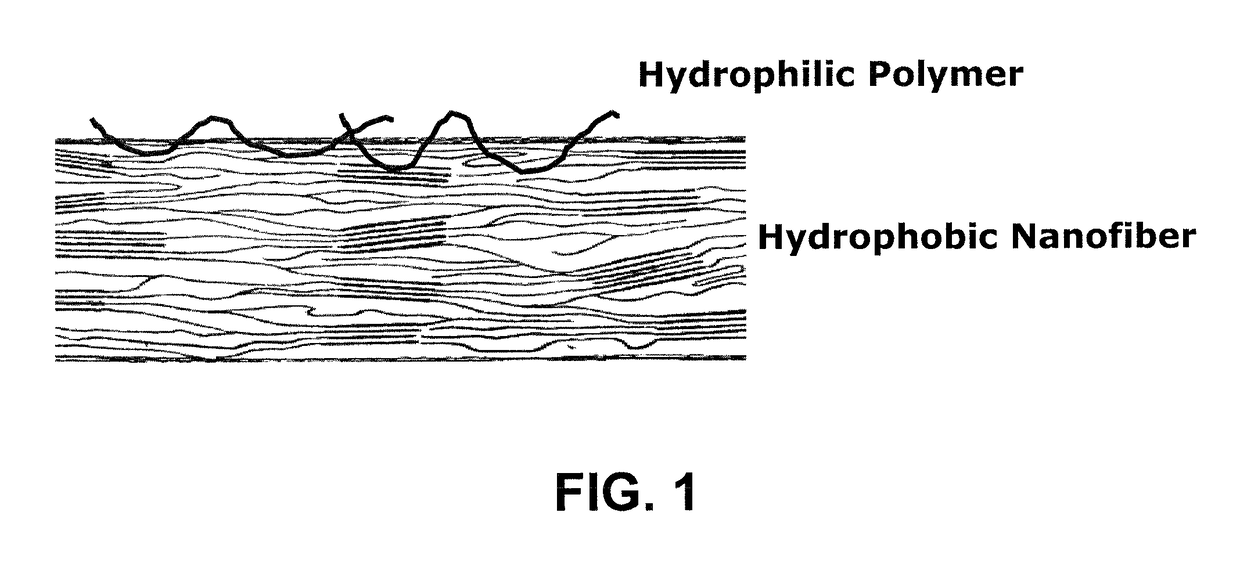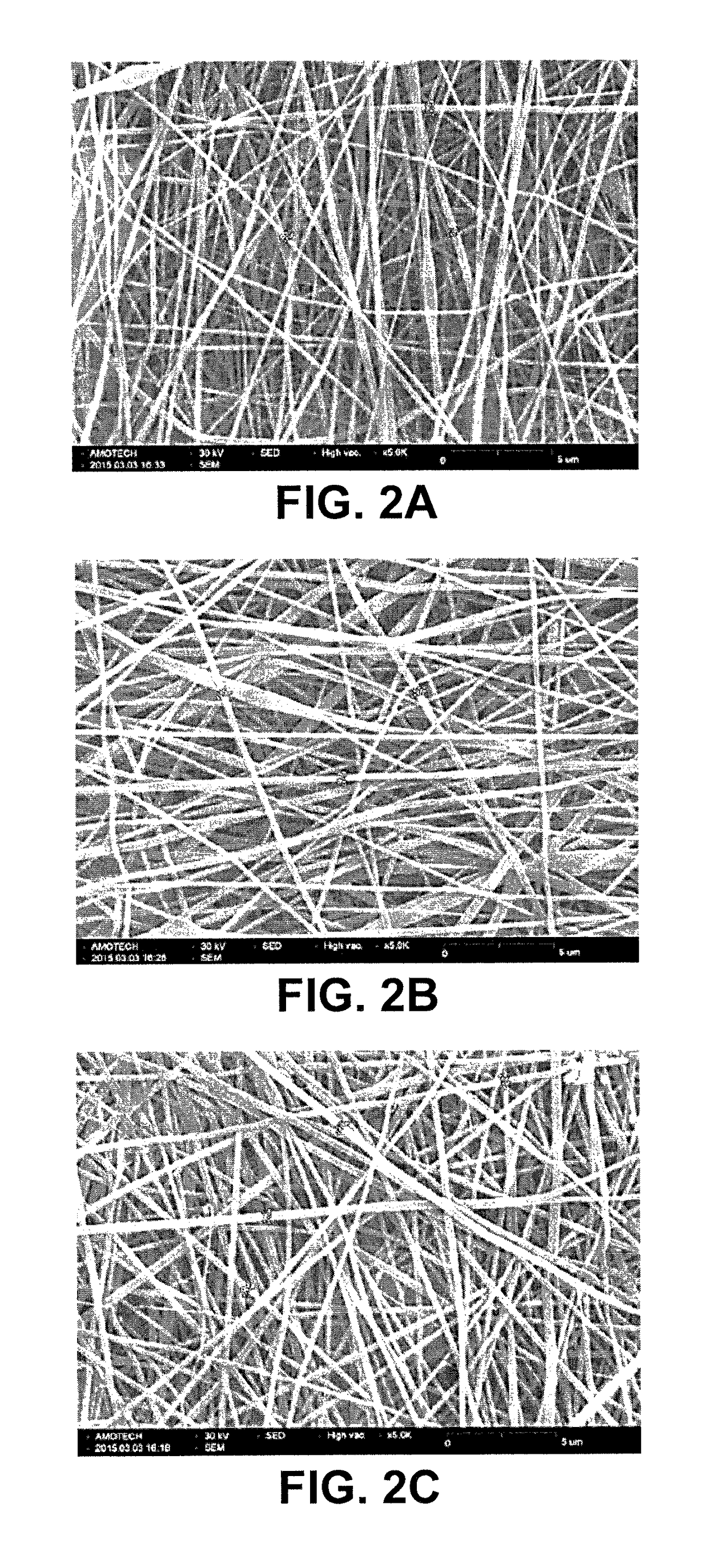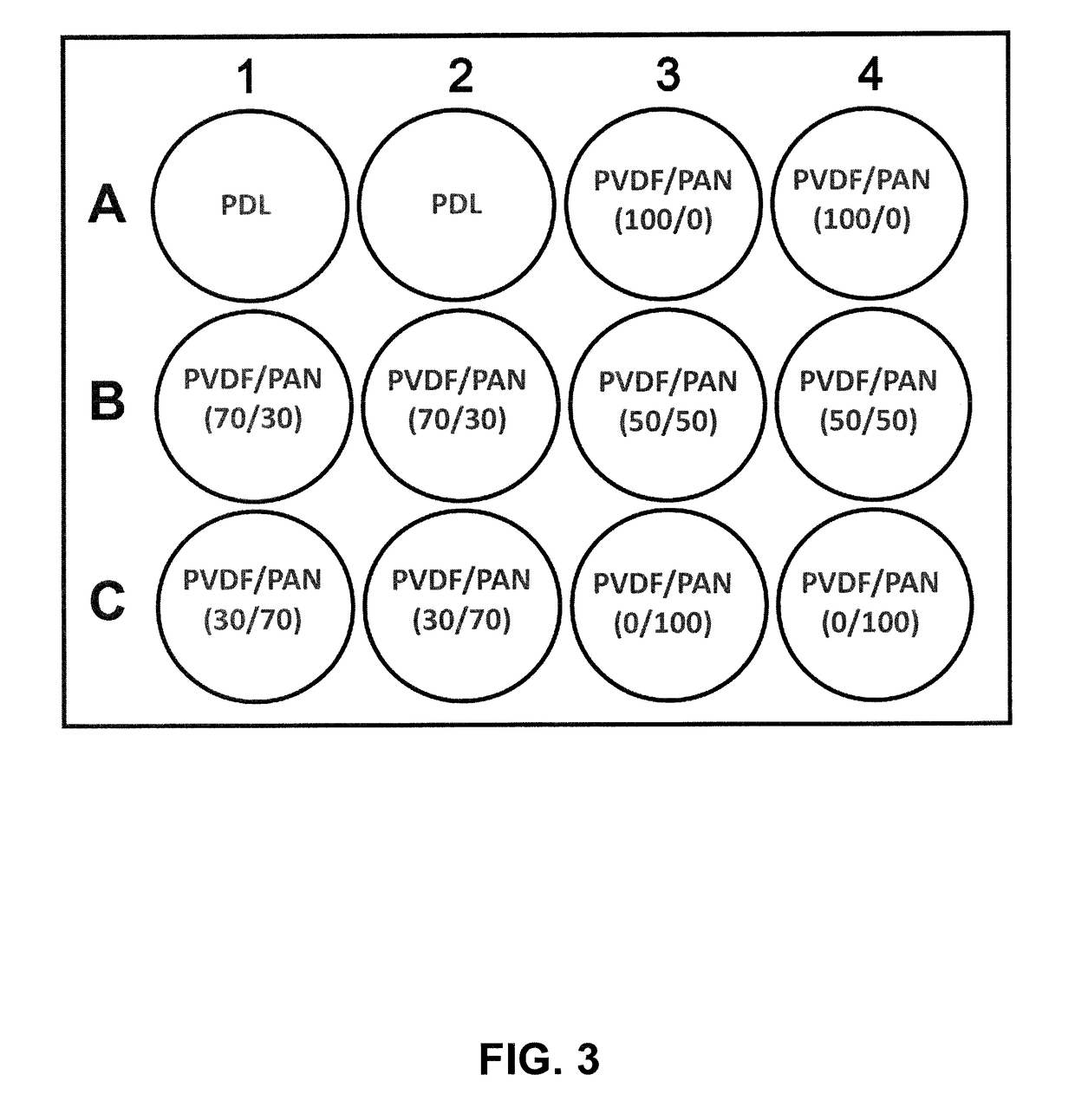Defined three-dimensional microenvironment for stem cell
a three-dimensional microenvironment and stem cell technology, applied in the field of defined three-dimensional microenvironment for stem cells, can solve the problems of low understanding of the effect of cell-matrix interaction in stem cell development, and the lack of currently available matrices of this level of complexity
- Summary
- Abstract
- Description
- Claims
- Application Information
AI Technical Summary
Benefits of technology
Problems solved by technology
Method used
Image
Examples
example 1
on of Electrospinnable Composition that Provides an Extracellular Microenvironment
[0083]PVDF with an average molecular weight of 400 kDa (Solvay Plastics, Paris), PAN with an average molecular weight of 150 kDa (Sigma-Aldrich, St. Louis) were dissolved in DMAc, respectively, to prepare 20 wt % solution. Each polymer solution was mixed together and the mixture ratio was summarized in Table 2.
[0084]The electrospinnable solution was placed in a plastic syringe fitted with a 27 G needle. A syringe pump (KD Scientific, USA) was used to feed the polymer solution into the needle tip. A high voltage power supply (NanoNC Co. Ltd.) was used to charge the needle tip. The nanofibers were collected onto grounded aluminum foil target located at a certain distance from the needle tip. The fiber meshes were then removed, placed in a vacuum chamber for two days to remove residual solvent, and then stored in a desiccator.
[0085]
TABLE 2Electrospinnable solution compositionStructural PolymerSolventPVDF / ...
example 2
ization of an Extracellular Microenvironment
[0086]The nanofiber membranes obtained were observed using a scanning electron microscope. The average diameter indicated is an average of at least three independent measurements, and the average diameter is 400 nm for all samples. The images corresponding to these fibrous microenvironments, obtained by scanning electron microscopy, are shown in FIG. 2A for PVDF / PAN (70 / 30), FIG. 2B for PVDF / PAN (50 / 50), and FIG. 2C for PVDF / PAN (30 / 70).
example 3
wal of Murine Embryonic Stem Cell
[0087]The ability of the microenvironment to support self-renewal of mESCs was evaluated by serial passaging of mESCs on the electroprocessed extracellular microenvironment as prepared in EXAMPLE 1.
[0088]For the maintenance of murine embryonic stem cell cultured on poly-D-lysine-coated surface (PDL, Sigma-Aldrich), DMEM Glutamax (GIBCO, Life Technology) containing high glucose 4.5 g / L, Na-pyruvate (0.11 g / L) and L-glutamine was used with L-Glutamine (Invitrogen), 1% non-essential amino acid (Sigma-Aldrich), 50 U / mL Penicillin / streptomycin (GIBCO) and 0.1 mM 2-Mercaptoethanol (GIBCO) as the basal medium, which was added with 20% fetal bovine serum (FBS, Hyclone) and leukemia inhibitory factor (LIF, 1,000 units / mL, Chemicon) at 37° C., 5% CO2 incubator.
[0089]To elucidate the effect of fibrous microenvironment on self-renewal of murine embryonic stem cells, the cells (6×104) were cultured for 48 hours on six different microenvironments placed in 12-well...
PUM
| Property | Measurement | Unit |
|---|---|---|
| diameters | aaaaa | aaaaa |
| diameter | aaaaa | aaaaa |
| molecular weight | aaaaa | aaaaa |
Abstract
Description
Claims
Application Information
 Login to View More
Login to View More - R&D
- Intellectual Property
- Life Sciences
- Materials
- Tech Scout
- Unparalleled Data Quality
- Higher Quality Content
- 60% Fewer Hallucinations
Browse by: Latest US Patents, China's latest patents, Technical Efficacy Thesaurus, Application Domain, Technology Topic, Popular Technical Reports.
© 2025 PatSnap. All rights reserved.Legal|Privacy policy|Modern Slavery Act Transparency Statement|Sitemap|About US| Contact US: help@patsnap.com



